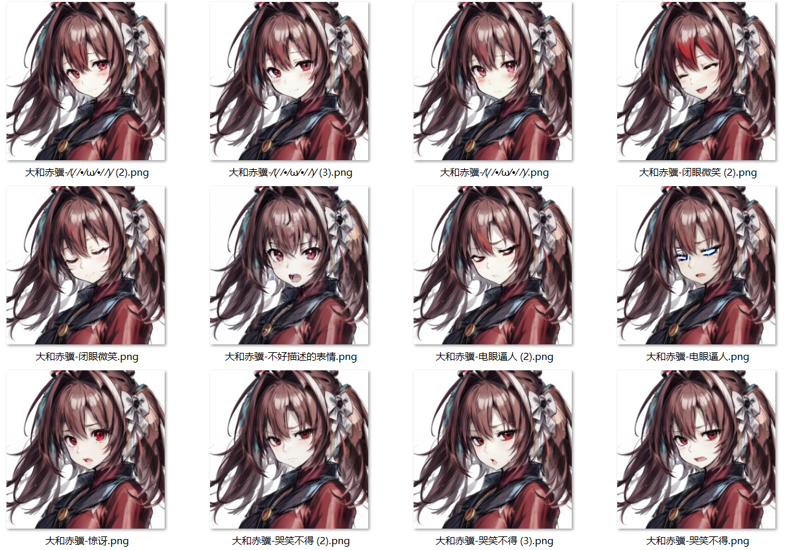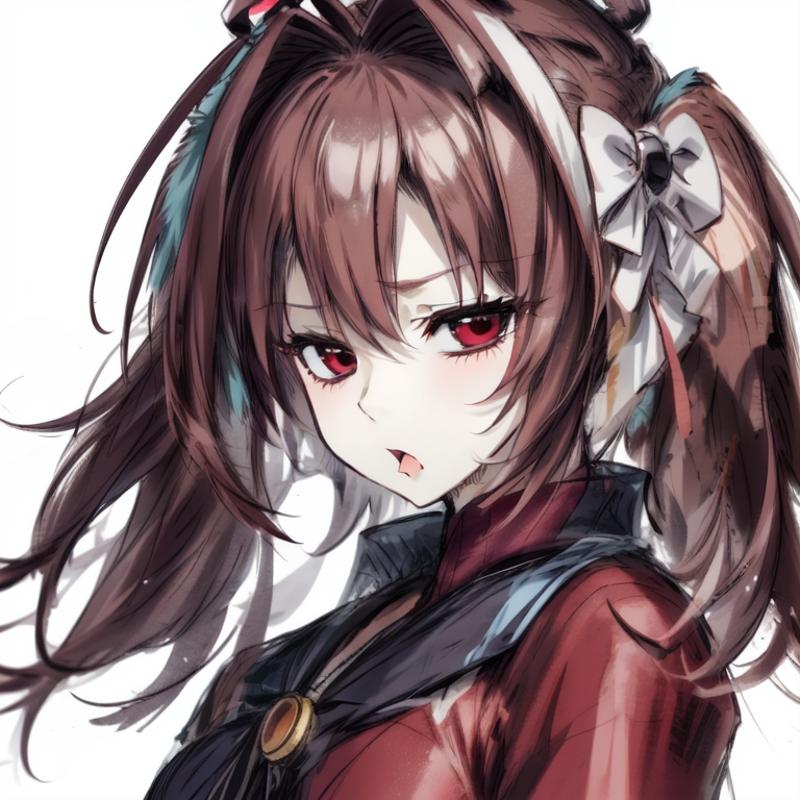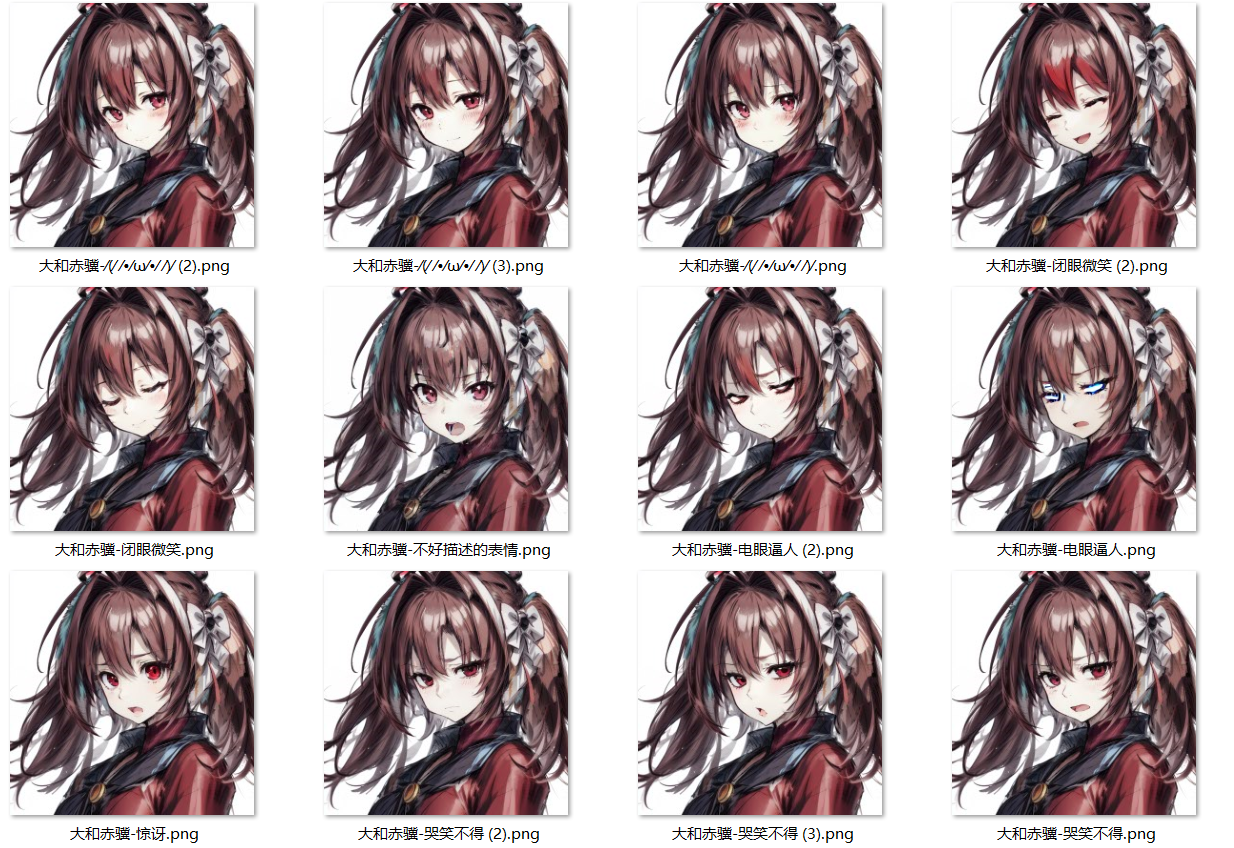相信很多人苦于找不到合适的表情词/或是无法使表情听自己的话,那么今天带来一种基于五官调整的表情控制法。
Many people struggle to find suitable emotive words or have difficulty making facial expressions match their words. Today, I bring a method of controlling expressions based on adjusting facial features.
人类的表情,归根结底是眉毛、眼睛、嘴型的复合(acg中对于鼻和耳的简化使它们没什么作用)。也就是说,对这三者进行控制,就可以实现表情的精准控制。
Human expressions, fundamentally, are a combination of eyebrows, eyes, and mouth shape (simplified in ACG with little emphasis on the nose and ears). In other words, precise control of these three elements allows for accurate expression control.
这里以我做的一套表情差分为例:
Here, I'll take a set of expression differentials that I've created as an example:

这里给出一些常用表情提示词:
1.大方向:expressionless,happy,shy,sad,despair,
2.眼部:closed eyes/half-closed eyes/open eyes/one eye closed/hollow eyes(有空洞骑士污染)/google eyes
3.眉毛:frown(皱眉)/raise eyebrow(挑眉)
4.嘴部:closed mouth/half-closed mouth/open mouth(可以尝试用权重控制张开程度)/pout(撅嘴)
Here are some commonly used expression tags:
General direction: expressionless, happy, shy, sad, despair
Eyes: closed eyes, half-closed eyes, open eyes, one eye closed, hollow eyes (with hollow knight pollution), google eyes
Eyebrows: frown, raise eyebrow
Mouth: closed mouth, half-closed mouth, open mouth (you can try using weight control for the degree of openness), pout
了解这些基本知识,我们就可以开始尝试,这里只给出一个简单的例子:
With an understanding of these basic concepts, we can now begin to experiment. Here's a simple example:

Here is a vivid and lifelike small expression of DaiwaScarlet. Let's take a look at its generating parameters:
(masterpiece, normal quality), standing, looking at viewer, 1girl, solo,
full body, simple background, from front, face focus,
red hair,
(cry:0.7), (laugh:1.25), (>_<:1.4), (half-closed eyes:1.1), (frown:1.15), (open mouth:1.3), (pout:1.4)
<lora:bsouls2:0.8> <lora:add_detail(细节微调):1> <lora:mo:0.4>
Negative prompt: error, animal ears, tail, horse ears, horse tail, horse girl, tears, badhandv4 EasyNegative
Steps: 27, Sampler: DPM++ SDE, CFG scale: 7, Seed: 3989660684, Size: 768x768, Model hash: bbe83e01df, Model: 全网首发|AWPainting_v1.0, Denoising strength: 0.25, Clip skip: 2, Mask blur: 4, Lora hashes: "bsouls2: 19165dd07e32, add_detail(细节微调): 7c6bad76eb54, mo: 689291017020", TI hashes: "badhandv4: 5e40d722fc3d, EasyNegative: c74b4e810b03", Version: v1.5.1
Ignoring the irrelevant items, let's focus on the key parts:
(cry:0.7), (laugh:1.25), (>_<:1.4), (half-closed eyes:1.1), (frown:1.15), (open mouth:1.3), (pout:1.4)
这是一张哭笑不得的表情,所以同时有哭和笑的标签;为了突出其有些疑惑的模样,选择眼睛微闭、皱眉标签;为了表现其张口结舌的样子,同时添加张口、撅嘴标签。
当然不可否认的是,这种操作手段需要不断调整参数并抽卡,最终才能得到你心目中满意的结果。
This is an expression of mixed feelings, both crying and laughing, hence the tags for both. To emphasize a slightly puzzled look, closed eyes and frown tags are chosen. Additionally, to portray an open-mouthed and pouting appearance, open mouth and pout tags are included.
Certainly, it's undeniable that such manipulation requires continuous adjustment of parameters and experimentation to ultimately achieve the desired result.





